Ornamental Tree & Shrub
Insects
Most all plants in nature are susceptible hundreds of different kinds of insects and mites and the different kinds of ornamental plants used in the landscape are attacked and susceptible as well. Fortunately only a few a dozen these hundreds of insects and mites are really common problems in most landscapes. These insects or insect-like pests are either leaf chewing, or leaf piercing/sucking insects, wood-boring, or gall makers. Many of these pest can promote bacteria and viruses to the plants through their bodily fluids or on their body parts themselves. Most can be controlled through preventive treatment from horticultural oils, insecticidal soaps, and insect grow regulators. Once the insect is present like any other curative treatments can and should be limited and not nearly as effective as preventive treatment. Most lay eggs which are not affected by insecticides or like soft scale which are only effected at a certain time of activity. Timing is crucial within the curative approach. Synthetic pests and some oils applied to the soil work best in this approach for most all insect because it is taken into the plant internally and last for several weeks and basically poisoning the best as it feeds on the host plant but do not harm host plant. These however are also the most costly insecticides and require limited use due to the possibility of insect resistance to the chemical.Disease
Disease can result from insects but most mistaken identity and not related to insect pest or a plant pathogen. So this means our first approach is for successful disease management starts with more than just spraying pesticides. As with other pest management issues prevention is not only the best and most effective approach to control a plant pest and it is often the only effective approach. In understanding and managing a problem we must first understand the host plant and its requirements. There are many factors which can lead and cause issues in ornamental landscape plants and many can resemble to those caused by plant pathogens or insects pest. These symptoms can result from poor plant choice and landscape where there is too much or too little sun light, too wet from poor drainage or too dry, those of overwatering, nutrient deficiencies, pest toxicity, air slow and pollution. These problems of poor plant selection are often blamed on insects or disease pathogens.Insects of Ornamental Plants
Common insect problems in Southern Landscape
Ornamental Plants
| SUCKING INSECT | LEAF EATING PEST |
| Like aphids, lace bugs, mealybugs along several other pest species are common and attack plants such as roses, crape myrtle, hydrangea, azalea, and a host of other landscape ornamentals. These sap-sucking plant pest feed by piercing the plant leaves to remove and feed on plant fluids and the damage from this is where the bigger problem stems from. As they feed they secrete a sticky substance called honeydew in which leads to a fungal growth called sooty mold or black sooty mold which forms a black and sometimes a grayish/ black coating on plant leaves, tender stems or flowers. | Japanese beetle, cutworms, tent caterpillar, and other pests that eat the leaves of the plant. Some insects like the Japanese beetle problem can be reduced if high infestation persists by treating and monitoring the grub population within the turf area. This is done best through preventive treatments to the lawn when grubs are near the soil surface in warmer temperatures. Once the beetles are on the plants they can be controlled through a systemic insecticide treatment. This is taken into the plant leaves and insecticide flows through the plant making it toxic to the feeding insects. This treatment works on a host of plant-eating and feeding insects |
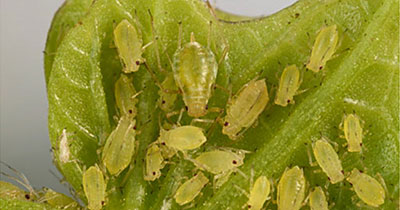 |
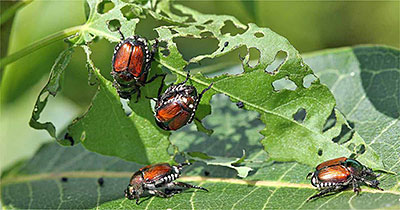 |
| The mold may cover an entire leaf surface or appear in spots, depending on the severity of the insect problem and infestation. Although sooty mold doesn’t penetrate the plant tissues, it can weaken the plant’s ability to photosynthesis by blocking much-needed sunlight. A severe enough sooty mold problem can cause general plant decline but rarely kills the plant but can weaken the plant’s ability to fight off other potential problems. The mold grows on the sticky honeydew secreted by sap-sucking pests, so the first step is to eliminate the pest while treating the mold | Once the beetles are on the plants they can be controlled through a systemic insecticide treatment. This is taken into the plant leaves and insecticide flows through the plant making it toxic to the feeding insects. This treatment works on a host of plant-eating and feeding insects. |
Diseases Ornamental Plant
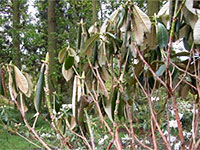 FIREBLIGHT
Blossoms and leaves will suddenly turn brown or black, but will usually stay attached to the plant. Cankers on branches are usually dark brown or purplish in color.( A canker is a dead or dying area usually found on branches.) The terminal branch will usually bend and look like a shepherd’s crook. This sudden wilting of the leaves which can give the appearance water deficiencies in the plant. |
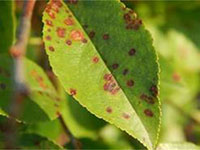 POWDERY MILDEW
This is a fungal disease that appears in all gardens at one time or another. It appears as a whitish or gray powder on the leaves. Severe cases will turn the leaves yellow.Most often seen on lilac, roses, zinnias, phlox and viburnums as well as in ornamental trees such as crape myrtles dogwoods and roses. It attacks the new grown plant and it may become twisted and deformed and infect flower buds not allowing it to open properly. |
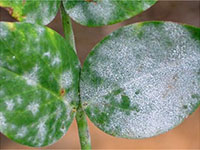 LEAF SPOT
Fungal disease appearing on rose leaves as black spots, like small dark brown, or purplish circles 1/16 -1/2 inch in diameter. Entire leaves that are affected turn yellow and fall from the plant. They can turn into shot holes in plants like cherry laurels, indian hawthorne, and photinia red tips. If left untreated, the plant stems can be infected may wilt, weaken and then die. |
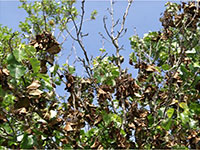 ROOT ROTS
Several root and crown diseases commonly affect landscape trees and shrubs. These include azaleas, rhododendron, camellia, and boxwood. In fact this disease can infect more than 900 other plant hosts. The Phytophthora kills the roots and the root crown. There is no fungicide for the treatment of this disease so once its starts a plan to reverse its affect must taken. Wet soggy soil with poor drainage is the biggest contributor to the development of this pathogen. |
